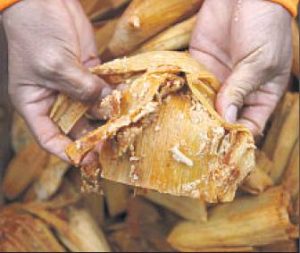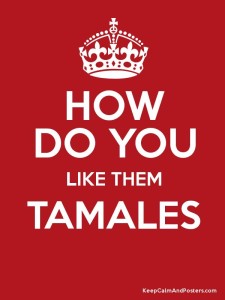At Amapola market in Downey, people stood in line for hours last week for the famous masa, the ground cornmeal for tamales — centerpiece of many a Christmas dinner.
 Loyal customers came from miles around for 30-and 40-pound batches that they would use in their elaborate holiday cooking ritual. But this year, they found themselves scrambling for doctors’ numbers, sending guests home hungry and rummaging through cupboards for backup plans.
Loyal customers came from miles around for 30-and 40-pound batches that they would use in their elaborate holiday cooking ritual. But this year, they found themselves scrambling for doctors’ numbers, sending guests home hungry and rummaging through cupboards for backup plans.
At Maria Coronado’s house, dozens of guests made do with a desperate meal of spaghetti and nachos. The tamales had turned out gloppy, and her husband felt so sick after a few bites that he had to visit the doctor.
“We didn’t have dinner for Christmas,” said Coronado, 51, who has shopped at Amapola markets for 30 years and has always regarded their masa as excellent, well worth the drive from her home in Riverside.
She was back in line Monday, waiting for a refund of the $143 she spent, along with hundreds of others complaining of bad tamales, stomach cramps, fever, nauseated children — and ruined Christmases. Others were lining up at Amapola stores in Compton, Paramount and West Covina.
“We’re devastated,” said Carlos Galvan Jr., the company’s vice president and chief financial officer. “We’re not entirely sure yet what occurred.”
Galvan, whose father and grandfather started the market chain in 1961, said the bad tamales seem to stem from a problem with a 120,000-pound supply of raw corn purchased from a longtime California vendor, though he refused to provide the name. He said Amapola has since switched vendors.





